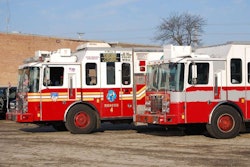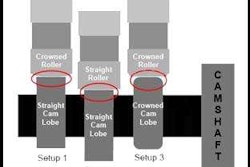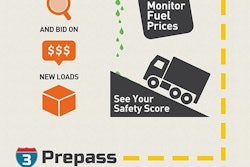General Motors’ U.S. retail sales were up 23 percent in July year over year. Ford enjoyed its best July for U.S. retail sales since 2005 on the strength of a 19 percent increase. Chrysler’s U.S. sales were its best for a July since 2006, and Toyota’s U.S. sales rose 17 percent.
Last month, Polk reported the average age of light vehicles in the United States had risen steadily over the past decade and now stands at a record 11.4 years. So with an improving economy, that pent-up demand is translating into long-overdue boom times for the automotive industry.
We aren’t seeing quite the same robust sales dynamic with heavy-duty vehicles. North American Class 8 net orders in July were up 38 percent from July 2012, but they were at their lowest level since September 2012, according to FTR Associates’ preliminary data. Annualizing the rate for the last six months would yield 251,700 Class 8 orders this year, up from 224,600 in 2012. While that’s not bad, truck manufacturers certainly aren’t experiencing the rebound their automotive peers are enjoying.
Obviously, a decision to buy a Class 8 truck is a bit more complicated than one to buy a Toyota Camry or Ford F-150. For starters, the vehicle is several times more expensive. But more important, you only need a truck if you have freight to fill the trailer, a driver to fill the seat and a freight rate to justify the investment. Even though we are seeing solid fundamentals in manufacturing, housing and job growth, obstacles to fleet renewal remain.
Tim Kohl, president of major refrigerated carrier Marten Transport, warns that anyone who expects a quick acceleration of truck buying doesn’t really understand what is happening in trucking. Speaking at the Avondale Partners Trucking Forum held last month in conjunction with the Great American Trucking Show in Dallas, Kohl notes the cost of trucks and trailers is rising at double-digit rates while freight rates are rising only 2 percent to 3 percent. “And somehow everything is going to get better by the end of the year? It’s not.”
Shippers are keeping rates low because there hasn’t been a shortage of capacity, Kohl says. While this will change, it will take time. Eventually equipment will simply wear out — probably starting with trailers — and capacity will drop, Kohl says. Only then will rates rise, and that will have to happen before carriers will have the resources to replace their trucks and trailers.
The average age of U.S. Class 8 trucks did drop very slightly in 2012 to just under 6.6 years, according to ACT Research. But getting back to the 5.4 years that was typical before the recession just isn’t going to happen, says Derek Leathers, president of Werner Enterprises. Also speaking at the Avondale Forum, Leathers estimates returning to 5.4 years would require an investment of $54 billion over 24 months.
The big question is whether the recovery in rates and access to financing will come fast enough to save trucking operations that are caught in the trap created by higher operating costs and the lack of capital to replace trucks and trailers. It’s a problem for many carriers of all sizes, but as we have discussed in recent months smaller trucking companies are the ones especially vulnerable due to their limited access to capital.
Last month, Randall-Reilly Market Intelligence surveyed 179 corporate and operations executives at for-hire trucking companies on trends and developments that would be most significant for trucking over the next few years. Carriers with 100 or fewer trucks said that more expensive equipment was most significant for trucking in the next few years among 18 trends and developments presented. Among larger carriers, more expensive equipment rated only 9th.
Older trucks are a good source of parts and service, but if fleets get to the point where they can neither operate them nor replace them, that is a scary proposition.










